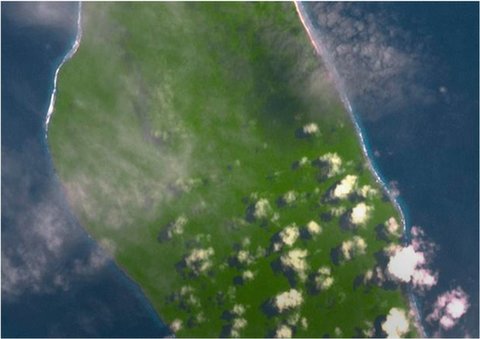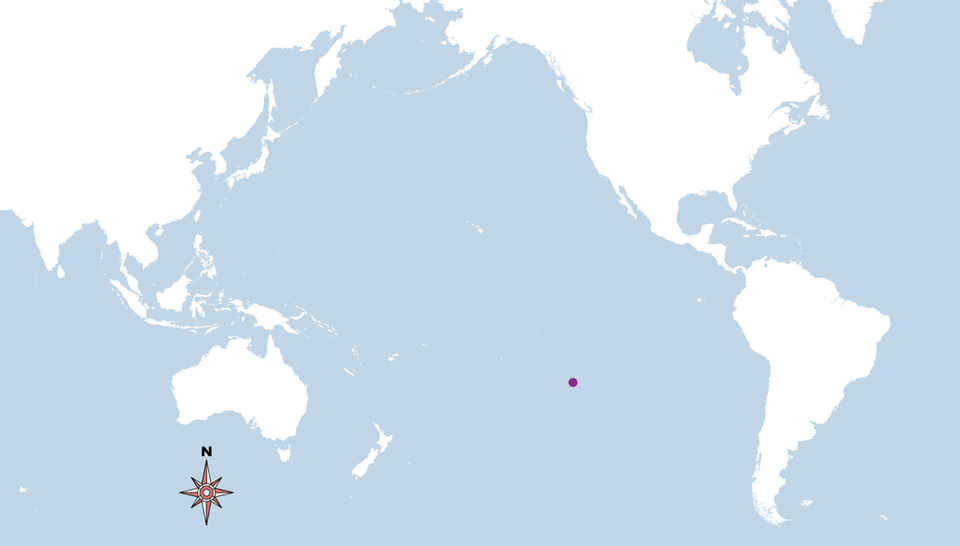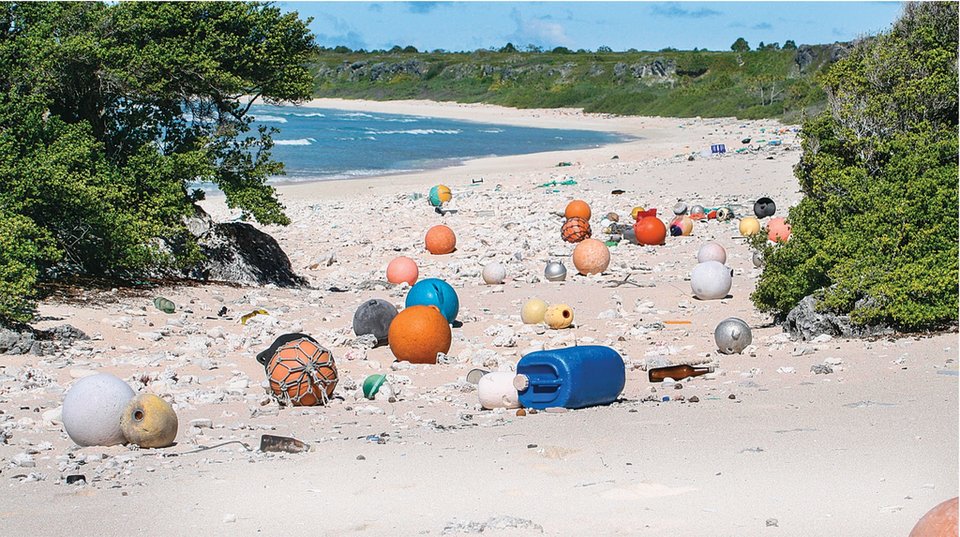PlasticPollution
ImagineifplastichadbeeninventedwhenthepilgrimssailedfromPlymouth,England,toNorthAmerica.WhatiftheMayflowerhadbeenstockedwithbottledwaterandplastic‑wrappedsnacks?Theplastictrashfromtheirvoyagewouldprobablystillbearound,fourcenturies later.
Ifthepilgrimshadbeenlikemanypeopletoday,theymighthavetossedtheirtrashoverthesideoftheirship.AtlanticOceanwavesandsunlightwouldhavewornallthatplasticintotinybits.Thosebitsmightstillbefloatingaround,waitingtobeeatenbyfishoroysters,andultimatelyperhapsbyoneof us.
Plasticwasn’tinventeduntilthelate19th century.Massproductionofittookoffaround1950.Inonly70 years,wehaveproducedawhopping9.2billiontonsofplastic.Ofthat,morethan6.9billion tonshavebecomewaste.Andofthatwaste,astaggering6.3billiontonswerenever recycled.
Nooneknowshowmuchunrecycledplasticendsupintheocean.In2015,JennaJambeck,aUniversityofGeorgiaengineeringprofessor,madean estimate.

Isthisaflorist'sshopinChinafilledwithbeautifulflowers?Lookagain.Theseplantsareallmadefrom plastic.
Jambeckprojectedthatbetween5.3and14 milliontonsendupintheoceaneachyear.Mostofitisn’tthrownoffships,though.It’sdumpedonlandorinrivers,mostlyinAsia.It’sthenblownorwashedintothesea.It’sunclearhowlongitwilltakeforthatplastictocompletelybiodegrade,orbreakdown.Estimatesrangefrom450 yearstomaybe never.
Howdidwegethere?Plastichastransformedourlivesasfewotherinventionshave.Plasticeasedtravelintospace.Itrevolutionizedmedicine.Itevenextendedthelifeoffood,intheformofplastic wraps.
Plasticwasevenusedtosavewildlife.Inthemid‑1800s,pianokeys,combs,andothertrinketsweremadeofelephantivory.Withtheelephantpopulationatriskandivoryscarce,acompanyinNewYorkCityofferedarewardtoanyonewhocouldcomeupwithan alternative.
AninventornamedJohnWesleyHyatttookupthechallenge.Hecreatedanewmaterial,celluloid.Itwasmadeofcellulose,thepolymerfoundinallplants.Itbecameknownasplastic.Anythingandeverythingcouldbemadeofplastic,andsoitwas,becauseplasticwascheapto make.
HendersonIsland’sShame
HendersonIslandisatiny,uninhabitedisland.ItsitsinthemiddleofthePacificOcean.Thenearestmajorpopulationcenterissome4,800 kilometers(3,000 miles)away.ThoughitishalfthesizeofManhattan,morethan19 tonsoftrashlitteritswhite,sandybeaches,muchofit plastic.
Researchersestimatethatithasthehighestconcentrationofdebrisofanyplaceintheworld.Theybelieveithasmorethan37 millionpiecesoftrash.Foreverysquaremeteryouwalk,onaverageyou’llfind672 piecesoftrash.Foreachvisiblepieceofdebrisonthebeach,twopiecesareburiedinthe sand.
HowdoessomuchtrashwashashoreonHendersonIsland?TrashbobsacrossglobalseasuntilitgetssweptintotheSouthPacificgyre.Thegyreisacircularoceancurrentthatfunctionslikeaconveyorbelt.ItcollectstrashandsendsitstraighttoHenderson’sshoreatarateofmorethan3,500 piecesa day.

HendersonIslandisoneoftheworld'smostfarawayplaces.Itisalsooneofitsmost polluted.

Henderson Island
anuninhabitedislandprizedforits animal diversity
Asia
Australia
NorthAmerica
SouthAmerica
PacificOcean
HendersonIsland
- Morethan37millionpiecesofplasticonthe island
- Morethan3,500pieces washing up daily

